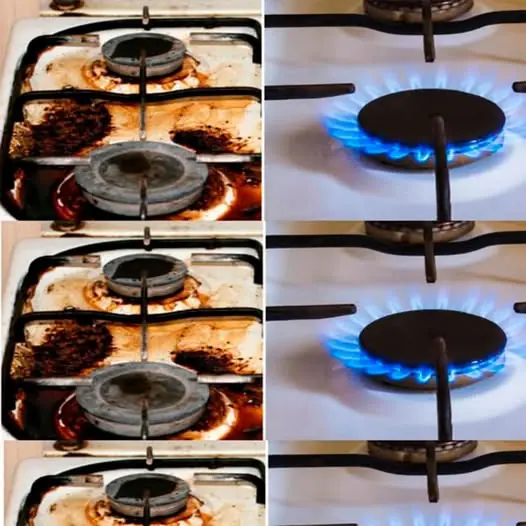
The Overlooked Refrigerator Setting That’s Quietly Inflating Your Electricity Bill

In nearly every household, the refrigerator runs 24/7—keeping food fresh, safe, and accessible. But what many people don’t realize is that one small, often ignored setting inside the fridge may be costing them far more on their electricity bills than they think.
While we’re always hunting for energy-saving tips, few mention this simple habit that could lead to noticeable savings—especially during the colder months.
The Hidden Culprit: Your Temperature Dial
Most refrigerators come with an adjustable temperature dial ranging from level 1 to 5 or 1 to 6. During hot summers, it’s common to crank it up to the max. But here’s the secret: in winter, when the ambient temperature is naturally cooler, you likely don’t need your fridge running at full power.
Reducing your refrigerator’s setting to level 2 or 3—or even level 1—in cold seasons can still keep your food safely chilled at a temperature between 2°C and 5°C, while significantly lowering energy use. The same logic applies to the freezer section, which can also be adjusted based on the volume and type of food being stored.
Tailor Settings to Match Food Storage
Besides weather, the amount of food in your fridge should influence the temperature setting. If the fridge is half-empty, it doesn’t need to work as hard to maintain a cold environment. Lowering the setting in this case prevents energy waste.
Conversely, if your freezer is stocked with meats or seafood, maintaining it at around -18°C helps preserve freshness and inhibit bacterial growth—without freezing more than necessary.
Extra Ways to Cut Fridge Energy Use
Optimizing your fridge’s temperature setting is just one part of the puzzle. Experts recommend a few additional practices to maximize efficiency:
1. Strategic Placement
Avoid placing your fridge near heat sources like stoves, ovens, or direct sunlight. Ensure the back and sides have enough clearance from walls to let hot air dissipate. Poor ventilation forces the compressor to work overtime, draining more electricity.
2. Don’t Keep the Door Open
Every second the fridge door stays open allows cold air to escape. The compressor then has to work harder to restore the temperature, consuming more power. Always close the door promptly after use.
3. Use Glass or Ceramic Containers
Glass and ceramic retain cold better than plastic, helping the fridge maintain its internal temperature. Additionally, neatly organizing food improves air circulation, meaning the appliance doesn’t have to work as hard to cool contents evenly.
4. Clean Vents and Coils Regularly
Dust and grime clogging up the vents or coils can drastically affect performance. Wipe down your fridge at least every three months to keep it running efficiently and prevent unnecessary energy use.
Final Thoughts: Small Habit, Big Impact
Reducing your electricity bill doesn't always require major changes—sometimes, it’s as simple as tweaking a dial. Adjusting your refrigerator’s settings in winter, maintaining it regularly, and storing food thoughtfully are all minor habits that, together, can lead to substantial long-term savings.
In an age where energy efficiency matters more than ever—for both your wallet and the environment—it’s time to look inside your fridge and take control of one of the most overlooked sources of energy consumption in your home.
News in the same category


How to Tell If Your Eggs Are Still Fresh: The Ultimate Kitchen Guide

Simple Household Hack: Banana Peel + Detergent = Roach Killer Miracle Overnight!

That Little Hole In A Safety Pin Isn’t Just for Looks — Here’s What It’s REALLY For

Swollen Lymph Nodes: What They Really Mean and When to Worry

How Often Should You Really Wash Your Clothes? A Smarter Guide to Laundry Frequency

5 Creatures That Can Crawl In Through Your Toilet and How to Stop Them

15 Ways to Use Vinegar for Home and Beauty

Why Hotels Use Bed Runners – And How Guests Actually Use Them

20 DIY cleaning hacks for a spotless home

Add This To The Water For Your Floors

Meaning behind the ‘WC’ sign outside bathrooms

Gas stoves, 1 tablespoon and you'll have them shining again: this is what you should do

Off The RecordWhy Is It Called Spam, Anyway? A Brief Inbox History Of The Product That Was Sold Over 8 Billion Times

10 Things You Should Do When Checking Into a Hotel Room

Most people get hair dye stains on their clothes without knowing how to remove them — and it's a cleaning trick many tend to overlook.

Why do some window grilles have a curve at the bottom?

Are Non-Stick Pans Really Safe?

Vinegar Is the Secret to Soft Towels, Whiter Whites
News Post

This optical illusion may help identify autistic traits in seconds

This is my preferred way

Julia Roberts Gave Birth to Twins at 37 — Pics of Her ‘Beautiful’ Teens Who Look like Her Husband

ABC Cubes For Flawless Skin

Scientists Grow First Fully Formed Tooth In Lab — A Groundbreaking Breakthrough

Fermented Rice Water & Cloves Scalp Treatment

Top 10 Hydrating Serums for Dry Skin Trusted by Experts and Beauty Enthusiasts

Amazing uses of vaseline for skin

Unlock the Power of Vaseline: 16 Beauty Benefits & Smart Precautions

WE SENT MONEY FOR OUR SON TO PAY FOR COLLEGE – ONE DAY, WE DISCOVERED HE WASN’T EVEN ENROLLED AND WAS LIVING IN AN OLD TRAILER.

5 Baking Soda Uses for Face & Skin – Natural Beauty Secrets You Shouldn’t Miss

20 Great Uses of Vaseline Which You Probably Don’t Know

Unlock the power of Vaseline & Lemon

✨ Castor Oil Home Remedies: Unlock the Power of Nature for Your Beauty Routine ✨

I WAS THE ONLY ONE WHO ATTENDED MY GRANDMOTHER’S BIRTHDAY LUNCH – AFTER SEEING HER TEARS, I DECIDED TO TEACH MY FAMILY A LESSON

The Best Ways to Use Vaseline: A Complete Guide for Beauty & Skincare

Rub This Slice On Face To Get Spotless Skin

My Husband’s Cousin Came to Stay with Us Temporarily with Her Son – If Only I Had Known It Was All a Trap.

Restaurant Owner Disguises Himself as a Homeless Man to Choose His Heir.
